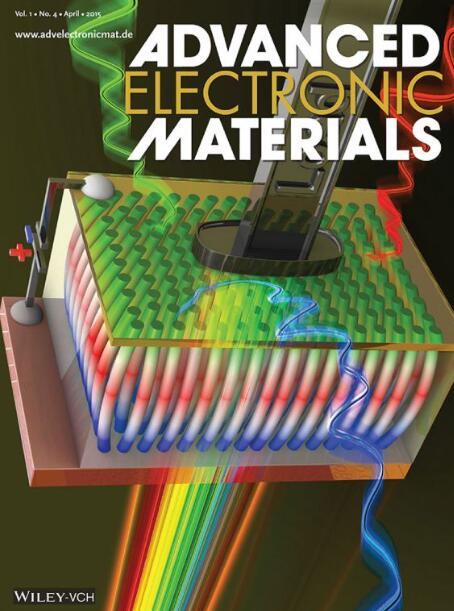ti基MXene光电器件的奇异光热响应
IF 5.3
2区 材料科学
Q2 MATERIALS SCIENCE, MULTIDISCIPLINARY
引用次数: 0
摘要
MXenes代表了一种独特的材料,可以设计出全新的技术,并在光电子学方面取得突破。为了充分发挥其潜力,必须实现精确控制化学计量学对光学和热性质以及器件性能的影响。本文揭示了基于Ti3C2Tx和Ti2CTx薄膜的光电器件的特性,突出了在不同实验条件下它们对激光照射的光热响应的显著差异。尽管它们在450 nm处的吸收系数相当,但热激发和弛豫现象表现出明显不同的动力学:Ti2CTx器件在加热-冷却循环过程中表现出强烈的不对称性,其散热动力学比Ti3C2Tx慢3个数量级,并且受环境条件的强烈影响。这一发现有望激发对MXenes光热响应的基础研究,并为其在印刷和可穿戴光电子产品(包括存储设备和神经形态计算)中的应用开辟令人兴奋的前景。本文章由计算机程序翻译,如有差异,请以英文原文为准。

Exotic Photothermal Response in Ti-Based MXene Optoelectronic Devices
MXenes represent one-of-a-kind materials to devise radically novel technologies and achieve breakthroughs in optoelectronics. To exploit their full potential, precise control over the influence of stoichiometry on optical and thermal properties, as well as device performance, must be achieved. Here, the characteristics of optoelectronic devices based on Ti3C2Tx and Ti2CTx thin films are uncovered, highlighting the striking difference in their photothermal responses to laser irradiation under different experimental conditions. Even though their absorption coefficients at 450 nm are comparable, the thermal excitation and relaxation phenomena display markedly different kinetics: Ti2CTx devices show a strong asymmetry during the heating-cooling cycle, with the heat dissipation kinetics being three orders of magnitude slower than Ti3C2Tx and strongly influenced by environmental conditions. The findings are expected to stimulate fundamental investigations into the photothermal response of MXenes and open exciting prospects for their use in printed and wearable optoelectronics, including memory devices and neuromorphic computing.
求助全文
通过发布文献求助,成功后即可免费获取论文全文。
去求助
来源期刊

Advanced Electronic Materials
NANOSCIENCE & NANOTECHNOLOGYMATERIALS SCIE-MATERIALS SCIENCE, MULTIDISCIPLINARY
CiteScore
11.00
自引率
3.20%
发文量
433
期刊介绍:
Advanced Electronic Materials is an interdisciplinary forum for peer-reviewed, high-quality, high-impact research in the fields of materials science, physics, and engineering of electronic and magnetic materials. It includes research on physics and physical properties of electronic and magnetic materials, spintronics, electronics, device physics and engineering, micro- and nano-electromechanical systems, and organic electronics, in addition to fundamental research.
 求助内容:
求助内容: 应助结果提醒方式:
应助结果提醒方式:


